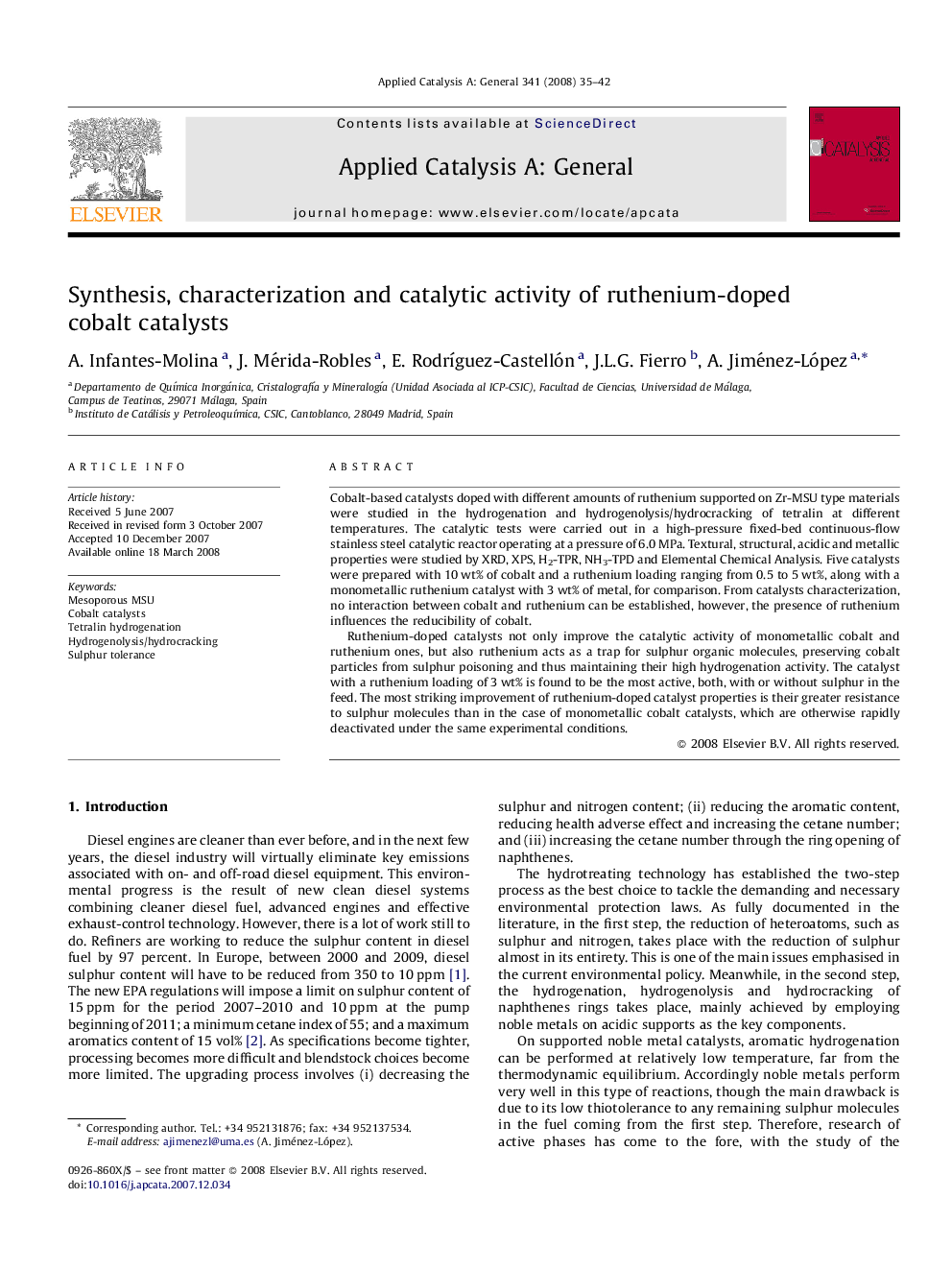| Article ID | Journal | Published Year | Pages | File Type |
|---|---|---|---|---|
| 43754 | Applied Catalysis A: General | 2008 | 8 Pages |
Cobalt-based catalysts doped with different amounts of ruthenium supported on Zr-MSU type materials were studied in the hydrogenation and hydrogenolysis/hydrocracking of tetralin at different temperatures. The catalytic tests were carried out in a high-pressure fixed-bed continuous-flow stainless steel catalytic reactor operating at a pressure of 6.0 MPa. Textural, structural, acidic and metallic properties were studied by XRD, XPS, H2-TPR, NH3-TPD and Elemental Chemical Analysis. Five catalysts were prepared with 10 wt% of cobalt and a ruthenium loading ranging from 0.5 to 5 wt%, along with a monometallic ruthenium catalyst with 3 wt% of metal, for comparison. From catalysts characterization, no interaction between cobalt and ruthenium can be established, however, the presence of ruthenium influences the reducibility of cobalt.Ruthenium-doped catalysts not only improve the catalytic activity of monometallic cobalt and ruthenium ones, but also ruthenium acts as a trap for sulphur organic molecules, preserving cobalt particles from sulphur poisoning and thus maintaining their high hydrogenation activity. The catalyst with a ruthenium loading of 3 wt% is found to be the most active, both, with or without sulphur in the feed. The most striking improvement of ruthenium-doped catalyst properties is their greater resistance to sulphur molecules than in the case of monometallic cobalt catalysts, which are otherwise rapidly deactivated under the same experimental conditions.
Graphical abstractHydrogenation, hydrogenolysis/hydrocracking of tetralin on supported cobalt-ruthenium bimetallic catalysts were evaluated. Catalysts with different loadings of ruthenium were tested at different temperatures and under the presence of dibenzothiophene. Ruthenium-doped catalysts improved the catalytic results previously obtained with a monometallic cobalt catalyst when dibenzothiophene was added to the feed as sulphur poison, due to ruthenium particle acting as sulphur trap.Figure optionsDownload full-size imageDownload as PowerPoint slide
